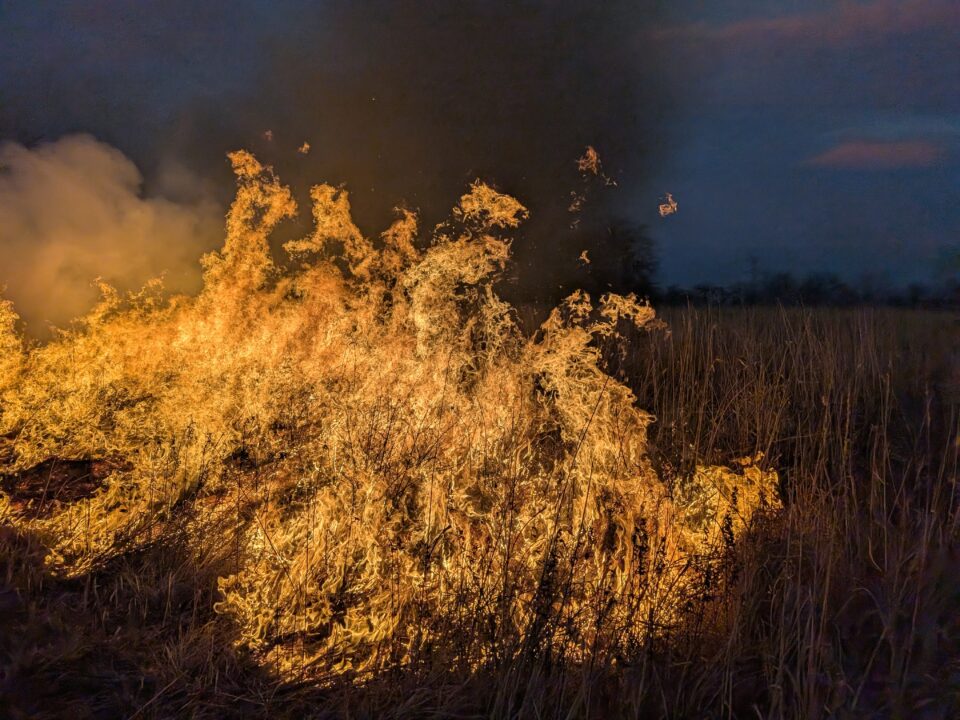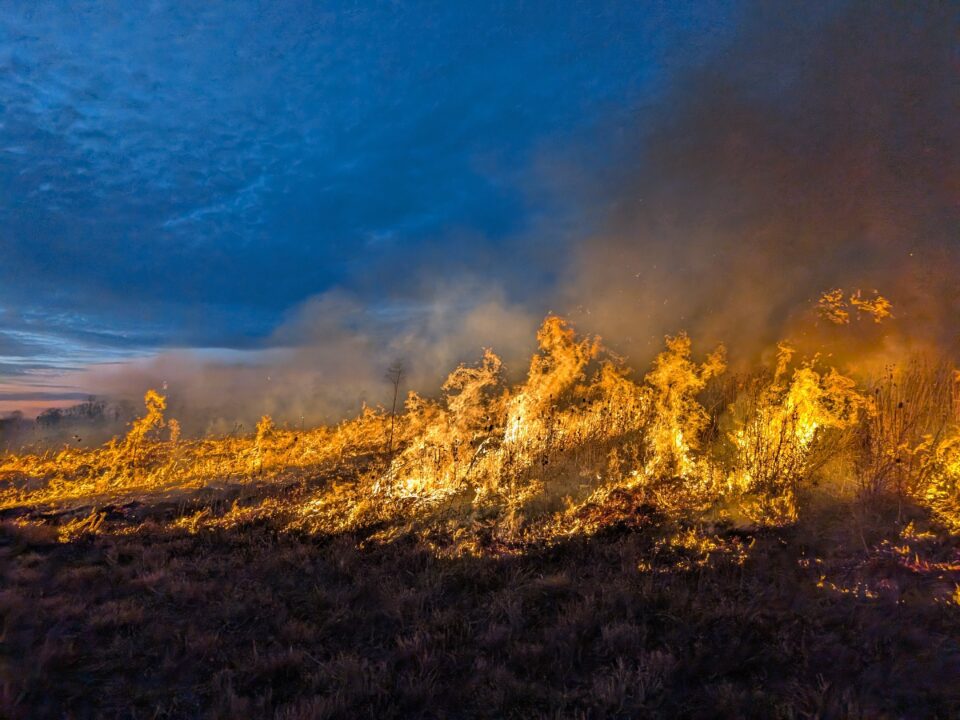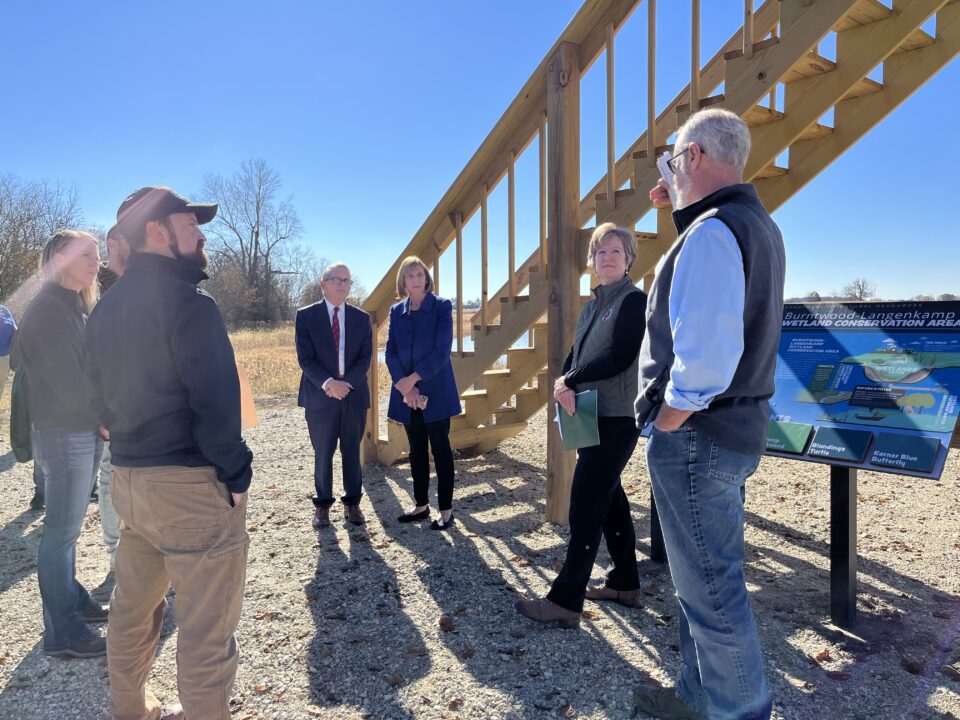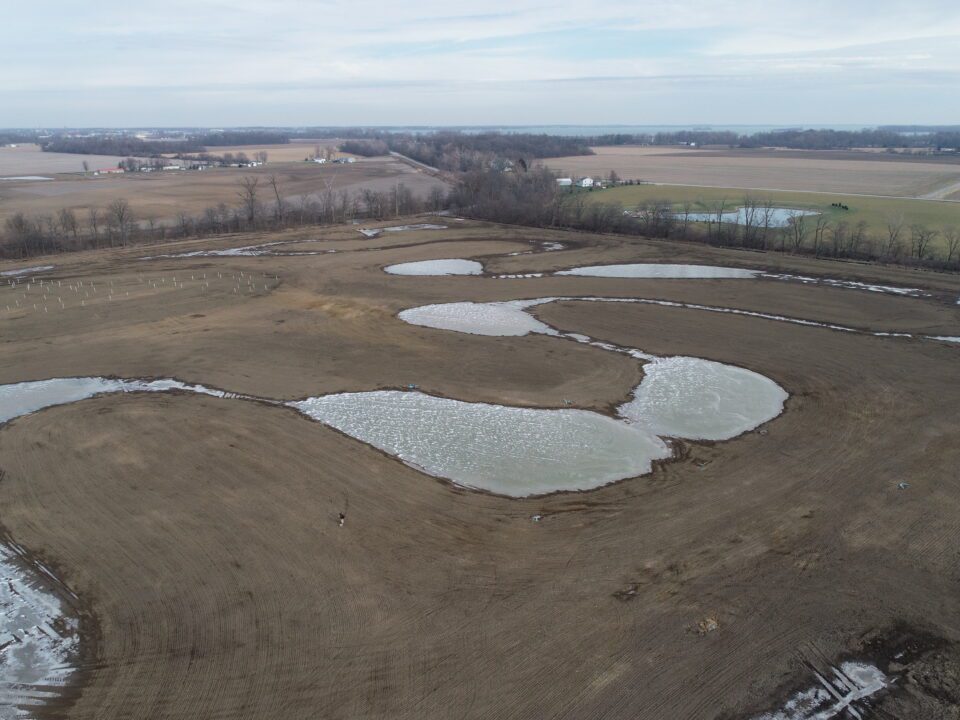December 27, 2024
December 27, 2024
Earlier this month, MAD Scientist Associates had the opportunity to manage a controlled burn for the Franklin Soil and Water Conservation District at the Hellbranch Meadows site in Galloway, Ohio. This area is part of the historic Darby-Plains, which was managed through fire and other human intervention to keep an open prairie-savannah habitat versus forest. This was beneficial for grazing animals and diversity of plant types and communities. This site took expert level planning to sustain the fire and keep it going in the right direction. Our team, led by Alexys Nolan and Cody Wright, worked the burn for nearly six hours. The footage of the burn at twilight is truly remarkable. We look forward to seeing how this area comes back to life next […]
December 27, 2022
Chris and Mark had the surprise of Governor DeWine visiting a wetland design/build site of ours (partnered with Access Engineering) in Mercer County to observe and promote the successes of the statewide H2Ohio program. The 89-acre Burntwood-Langenkamp site is owned by the Lake Facilities Authority and is managed by Mercer County. The request was for a treatment train style wetland that would intercept water from a channelized waterway (Burntwood Creek) and have water filter through over a mile of meandering marsh before reentering Coldwater Creek (immediately upstream of the confluence with Burntwood) and merging into Grand Lake St. Mary’s. We were able to create/restore 32-acres of emergent marsh habitat and reforest 10-acres and add prairie seed to surrounding uplands as a buffer to the stream […]
January 11, 2022
Grand Lake St. Mary’s (GLSM) is located in northwest Ohio, in a heavily agricultural watershed that produces a significant portion of our state’s grains and livestock. Runoff from row crop agriculture and concentrated animal feeding operations (CAFOs) has resulted in excessive nutrient loading to the lake, resulting in an increased frequency of harmful algal blooms (HABs). The proliferation of HABs can make the lake unsafe for swimming and adversely affects tourism, and this causes a damaging ripple effect on the local economy. Significant efforts by farmers and local officials have been ongoing since the HABs first appeared, and the lake conditions have been improving as a result of these efforts. Catalyzing these efforts, the State of Ohio has created the H2Ohio grant program to assist […]






